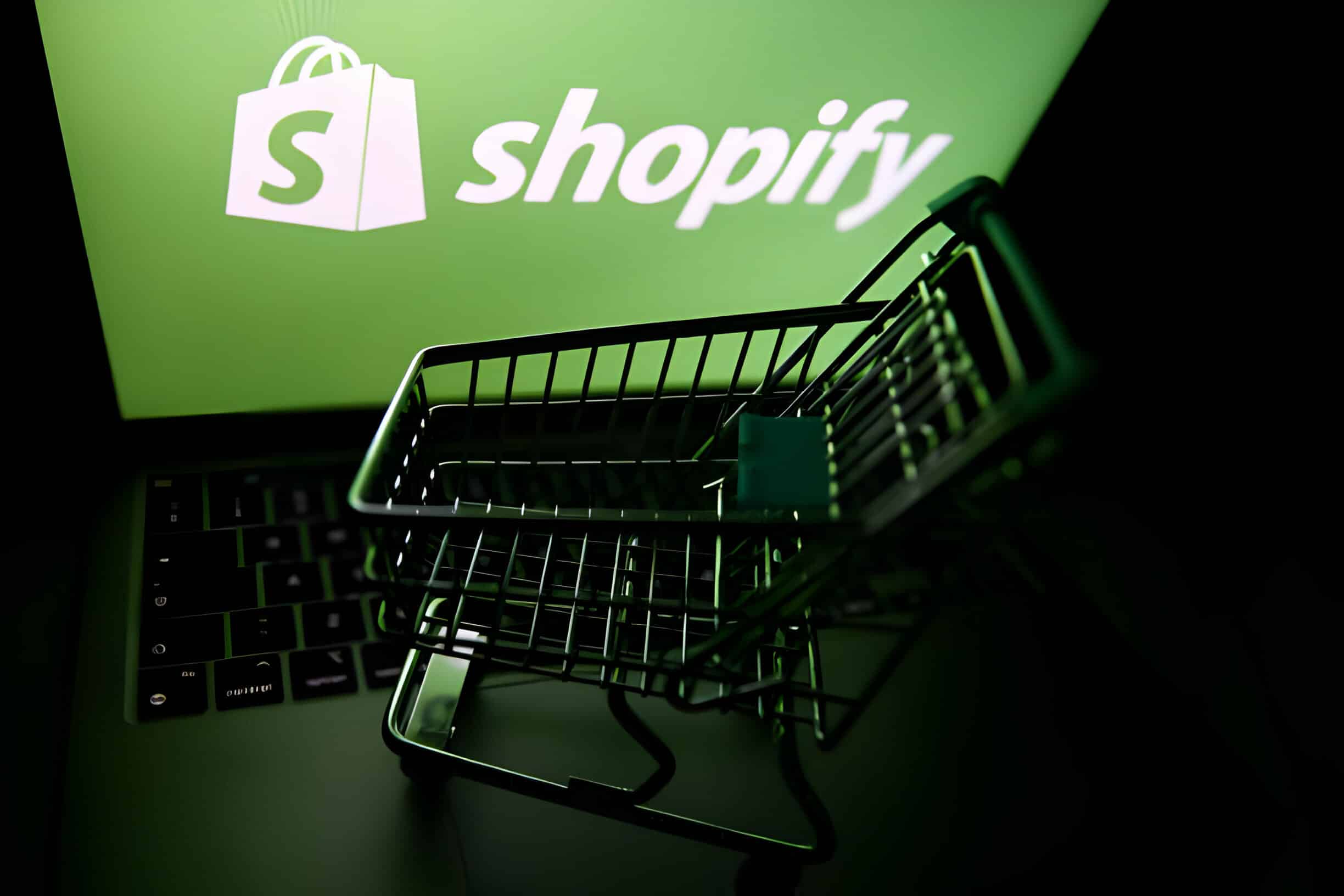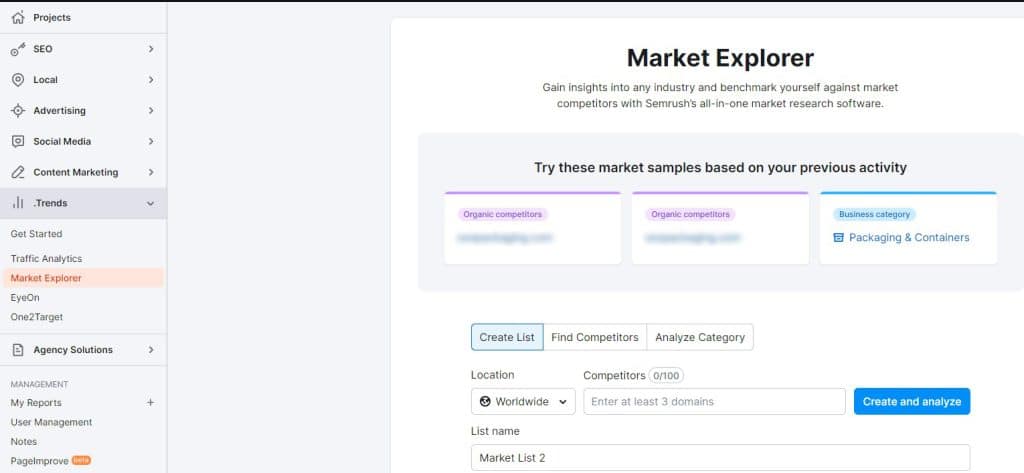

Are you thinking about Shopify Store Setup? Consider yourself lucky because now is an excellent time to do so.
The growth of e-commerce is expected to continue as consumers increasingly favor digital channels, with the global e-commerce market projected to reach US$6.07 trillion in 2024.
The shift towards e-commerce isn’t a fleeting trend. It’s a lasting change in consumer behavior, making an e-commerce store a smart choice for anyone considering starting a new business.
I’ll guide you through the process of setting up a successful e-commerce store. In this write-up, we will explore various Shopify Store Plans and platforms, as well as the specifics of Shopify Store Setup. With the assistance of Shopify experts, you can rest assured that your store will be set up efficiently and effectively.
After reading this blog, you will have the necessary skills to launch and manage an online Shopify Store successfully. Keep reading to learn more!
While looking for e-commerce options, smart business minds look for simple solutions. Shopify makes it straightforward to sell almost anything to anyone, anywhere. Delving into the platform reveals why it’s the backbone for over 1 million websites, handling billions in sales.
The complexity of building an e-commerce site from scratch is a thing of the past. With Shopify, you can set up your online store in minutes. The platform has many marketing tools to help your store do well from the start, perfect for your Shopify store.
Shopify is a powerful e-commerce website builder that is suitable for both small businesses and large enterprises. It offers a streamlined approach to online business operations, which can help boost sales and support growth.
But what should be the business idea for your online store? Let�s find out.�
Behind big businesses are great ideas. As an entrepreneur, dreaming up ‘the next big thing’ is exciting. Congratulations if you’ve already had that flash of inspiration � you’re on the first step of your journey. However, remember that the initial stages can be critical for your business’s success.
Resist the urge to bypass the research phase or dive headfirst into your new venture. Establishing a business requires both time and financial commitment. To assist you, I’ve created a guide to help determine if your business idea is viable before you invest your hard-earned money.
Are you ready to explore your new business idea? Here’s how to start. Follow these steps to thoroughly evaluate your idea before you launch your business and create a business website:

Writing a business plan helps you thoroughly consider your idea and assess risks, ensuring a solid foundation for your business.
Before launching your product or service, it’s vital to understand the market demand. Ask yourself what problem your business solves, how people currently address this problem, and whether similar products or services exist.�
SEMrush can help in this assessment by providing insights into search volumes, keyword trends, and competitor analysis.
This information allows you to gauge the interest level in products or services similar to yours, helping determine if there’s room in the market for your idea and if it offers a unique solution or improvement.�
Let�s get going. First, go to the “Market Explorer” in the “Trend” section.

Now, pick the category in the drop-down list and enter.
Understanding your direct and indirect competitors is crucial to ensure your business stays competitive. Direct competitors offer similar products or s?rvic?s, while indir?ct competitors offer alternative solutions to meet the same customer needs.
To identify your competitors, you can use tools like SEMrush. Go to the “Competitive Research” section and select “Organic Research.” Enter your domain, and SEMrush will generate a list of potential competitors based on market commonalities.
This feature considers various factors, such as shared keywords and market positions.
By understanding your competition, you can determine your unique selling point and assess if your business can realistically compete in the market.
Conduct market research to understand your potential customers’ needs, preferences, and behaviors. Use tools like online surveys to gather information about their demographics, buying habits, goals, and preferences.
�This knowledge allows you to tailor your business idea to meet customer needs better.
Test your business idea by creating a simple website and seeking feedback from friends, family, and potential customers. Monitoring responses and inquiries can provide valuable insights into the viability of your business idea.
This st?p is crucial for r?fining your conc?pt and understanding if it is relevant to your target audience.�
Now, let�s talk about some key features of Shopify that can be beneficial for entrepreneurs.�
Shopify stands out as a v?rsatil? and us?r-fri?ndly e-commerce platform suitable for entrepreneurs eager to start an online store and boost their sales. Its comprehensive nature caters to various niches and store types, offering a range of benefits:
Shopify simplifies transactions by including a built-in payment processor. This feature allows you to accept major credit cards, Apple Pay, Google Pay, PayPal, Amazon Pay, and even cryptocurrency, eliminating the need for third-party processors and enhancing customer trust.
Follow these steps to get going:�
As your store grows in traffic and sales, Shopify scales with you. Whether you’re making a few sales or millions, the platform can seamlessly support your expanding business.
Shopify excels at providing merchants with comprehensive guides, theme documentation, and access to an active community forum with over 7,000 members. This ensures you have all the resources and support needed to navigate the platform effectively.
Utilizing Shopify Payments, you can effortlessly sell in multiple currencies. A currency selector added to your theme allows international customers to view prices in their preferred currency.
By adding a currency switcher to your theme, customers can choose their preferred currency once it has landed in your store.
Shopify’s Geolocation app uses geo-IP detection to automatically suggest the appropriate currency to customers based on their location. This feature, along with a currency switcher, enables easy currency selection.�
However, customization options for the app are limited.
Upon enabling Shopify Payments and multi-currency, a currency section becomes accessible in the ‘Manage’ area of Shopify Payments.
You’ll then see each enabled currency.
Pick the one you want and get going.�
Shopify offers an efficient inventory system, enabling you to track stock levels, adjust inventory counts, and review inventory history, ensuring accurate management of your products.
With Shopify, you can access over 4,000 apps and over 100 store themes, including free and paid options. This variety is designed to meet diverse needs and budgets, making it especially beneficial for those starting with limited funds.
The platform’s drag-and-drop theme builder makes customizing your store’s appearance straightforward, allowing you to design your store to your liking without extensive coding.
Shopify’s customer support is renowned for its efficiency, particularly its 24/7 chat support. This reliable assistance can swiftly resolve issues, which is a crucial benefit for any entrepreneur.
Shopify enhances your products’ visibility in search engines through its SEO-friendly features. These include setting image alt descriptions and meta descriptions and integrating SEO apps for advanced optimization, helping your products rank higher in search results. it is really important to know how SEO works and Understand the Impact of SEO to rank Higher on Google.
�Sounds like a plan, no? These features can help you scale your online business and earn a notable amount of money online. Let�s move on to the shopify plans and find out which one offers what.�
Every great journey begins with a single step, and in your Shopify adventure, that step is choosing the right plan.
Wh?th?r you’r? just t?sting th? wat?rs or ready to dive into the deep end, there’s a Shopify plan with your name on it.
Shopify caters to a range of business sizes with its diverse pricing plans, each offering a variety of store features. Here’s a breakdown to help you choose the right Plan for your business:
Let’s have a look at the standard plans first.�
This Plan is designed for new businesses with dashboard analytics, fulfillment features, unlimited product listings, and two admin accounts.
This Plan suits growing businesses, offering five admin accounts and a credit card fee rate of 2.6% + 30�. It also allows selling in up to two languages.
Best for established businesses needing advanced features for scaling. It offers a 2.4% + 30� online credit card rate and the ability to sell in up to five languages.
Each tier includes a free SSL certificate, discount codes, unlimited products, 24/7 support, additional sales channels (eBay, Amazon, Instagram, Walmart), a comprehensive dashboard, and a drag-and-drop theme builder. For a detailed list of features, it’s advisable to visit Shopify’s plan features page.
For thos? who don’t n??d a full stor? but still s?ll products or s?rvic?s onlin?, Shopify Lit? is an affordabl?, lightw?ight option at just $9 a month. It allows you to add buy buttons to any sit?, acc?pt cr?dit cards onlin? and in-p?rson, and manage invoic?s and custom ord?rs through th? Shopify dashboard. This Plan also includes 24/7 support.
Shopify Plus is a premium solution for large-scale businesses, trusted by brands like Rebecca Minkoff and Heinz.�
This Plan is intended for small teams that handle large sales volumes. It provides several useful features, such as faster checkouts (60% faster), higher conversion rates, built-in AR and 3D media, multiple stores in various languages and currencies, advanced discounting and shipping rates, 99.99% uptime, and Avalara tax automation.
This Plan is ideal for businesses seeking enterprise-level capabilities without the complexity of traditional enterprise software.

To start creating your Shopify account, visit Shopify.com and look for the “Start free trial” button, which is usually located in the top right corner of the page.
Once you click on it, Shopify will ask you a series of questions about your store. These questions will cover aspects like what you plan to sell, your store’s name, and where your business is located. You have the option to answer these questions immediately or skip them for the time being.
For the purpose of this guide, let’s assume we’re setting up a clothing dropshipping store named �My New Dropshipping Store�.
After completing the sign-up process, you’ll be taken directly to your Shopify admin screen, also known as the Shopify dashboard. This is where you’ll manage your store.
By following these steps, you’ve successfully begun the process of setting up your first store on Shopify. The nest step? Customization.�
When choosing a Shopify theme, you get a glimpse of what it could look like with its images, fonts, and colors. But it’s important to customize the theme to align it with your brand. This helps to improve your brand’s image and increase sales. Here’s how to personalize your Shopify theme and make it work for you.
Shopify themes simplify structural design decisions, but adding a personal touch is key to making your brand stand out. You can ?ith?r hir? a Shopify d?v?lop?r or customiz? the theme yourself.�
Shopify Experts marketplace connects you with experienced designers who can offer expert guidance or handle the design work. If you prefer a hands-on approach, Shopify’s user-friendly theme editor lets you personalize your store without coding skills.
When someone visits your store, it should have that unique element – representing your value and mark in the business world. Here is how to get that unique store vibe:�
Start by selecting a suitable theme from the Shopify Theme Store. Consider your industry, catalog size, and desired features. Shopify offers free and paid themes with different functionalities and design options.
Adjust the color palette and fonts to match your brand. Use your logo colors or an online color palette tool to choose complementary colors. Select fonts that enhance readability and reflect your brand’s personality.
Consistency is key in branding. Use page templates and sections for a uniform look across your store. This approach maintains brand consistency and saves time in content creation.
Enhance your store’s functionality and design with Shopify apps. From customizing search bars to incorporating customer reviews and building landing pages, apps can significantly expand your store’s capabilities.
App embeds add extra functionality to your store, like live chat or analytics. They can be easily managed through the theme editor and are compatible with any theme version.
What�s next? Don�t forget product sourcing and inventory management. These are very crucial the online business world.�
Starting a business on Shopify brings a world of product-sourcing opportunities to your fingertips. Whether you’re looking to partner with suppliers, add a creative touch to white-label products, or explore dropshipping, Shopify has got you covered.�
Here’s a pro guide to navigating Shopify’s vast product sourcing and inventory management landscape.
Product sourcing is about finding and purchasing inventory from suppliers to resell. This includes working with manufacturers for custom products, buying from wholesalers, or partnering with drop shippers.�
Dropshipping, a popular method on Shopify, allows you to sell products without holding inventory, as the supplier handles storage and shipping.
It’s the simplest way to source products. Partner with suppliers like DSers and add products to your store. When orders come in, the supplier ships them directly.
This is ideal for quick setup. Wholesalers provide a range of market-tested products, which may mean less product differentiation.
Perfect for unique product ideas or variations of existing ones. It requires more upfront investment but offers greater control over branding and quality.
Use apps like DSers for seamless integration with suppliers. For niche products, consider Spocket or Creative Hub.
Evaluate suppliers based on product quality, delivery times, and customer feedback. Attend trade shows for networking and new ideas.
For those with a creative flair, making your own products offers full control over quality and branding.
Leverage Shopify’s vast app store for sourcing products. Apps like Faire, Printify, and Dripshipper offer diverse sourcing options.
Use Shopify’s built-in tools to track inventory levels, manage orders, and analyze sales data.
Understand industry trends and consumer needs. Use both primary and secondary research methods.
Always request samples to assess quality and supplier reliability.
Consider local suppliers for reduced costs and faster product launches.
Work with multiple suppliers to mitigate risks and meet business needs.
Now, it�s time to set up payment methods.�
S?tting up paym?nt and shipping options is crucial in managing your Shopify store. Here’s a comprehensive guide to help you navigate through this process.
Shopify POS enables various payment methods, giving customers various checkout options. This flexibility is key to providing a seamless shopping experience. You can set up Shopify Payments for POS, ensuring compliance with country and currency regulations.
�Additionally, activating different payment methods for the Shopify POS app is straightforward, enhancing the checkout process for both online and in-person sales.
Shipping profiles on Shopify are essential for defining specific shipping rules based on products and locations. For uniform shipping rates across all products, a general shipping profile suffices.
However, creating custom shipping profiles is necessary for different rates for specific products.�
Each location within a profile can have distinct shipping zones and rates, offering granular control over your shipping costs.
Understanding how shipping works is the first step in developing your shipping strategy. You can set up flat or calculated shipping rates applicable to all products in your general shipping profile.�
For businesses with multiple locations, setting shipping rates per location within each shipping profile allows for more precise control.�
Additionally, offering local pickup and delivery options caters to customers who prefer local methods of receiving their products.
For more complex shipping needs, Shopify provides:
These advanced features ensure your shipping strategy is as efficient and customer-friendly as possible.
Marketing is an inevitable term in the business world, whether it�s online or traditional rick and mortar. Let�s talk about its influence in the shopify world.�
Let’s dive into setting up your Shopify e-commerce store. If you’ve already completed some steps, feel free to skip ahead:
Visit Shopify and sign up to start your three-day free trial. Choose a store name that’s unique yet simple and relevant. Shopify will prompt you to select another if your name is already used. Fill in your personal details, including name, address, country, and contact number.�
When asked about your products, you can indicate whether you’re just exploring or have specific items to sell. Once done, click “I’m done.”
After account creation, you’ll land on the Shopify admin screen or dashboard. This is where you’ll customize your store, upload products, and set up payments and shipping. Initially, focus on the basics and explore other options later in the side menu bar.
Shopify’s theme store offers a wide range of themes, each supported by its designers. S?l?cting a theme that aligns with your brand can enhance visitor engagement and product exploration.�
Themes come with easy-to-use customization options, requiring no coding skills. For more features, consider premium themes. If needed, Shopify Experts can help customize your site for a fee.
It is important to monitor how your marketing is effecting the business and optimize it accordingly.�
To excel in the e-commerce world, a deep dive into metrics is essential. Successful online stores leverage data-driven strategies for growth, focusing on key performance indicators (KPIs) and continuously refining their approach based on performance metrics.�
Here’s an expert guide on monitoring and optimizing your Shopify store’s performance:
Understanding your store’s conversion rate is fundamental. It’s the percentage of visitors who make a purchase.�
However, diving deeper into segmented conversion rates provides insights into specific campaigns and customer behaviors.�
Segment by traffic source, device type, and new versus returning visitors to tailor your strategies effectively.
Analyze how traffic sources (like Google, Facebook, or Reddit) contribute to conversions. This helps identify where to focus your marketing efforts and refine your targeting strategies.
With the increasing prevalence of mobile commerce, understanding the conversion rates on different devices is crucial. Identify gaps between desktop and mobile conversions and optimize the user experience accordingly.
Typically, returning visitors have higher conversion rates. Segmenting these conversions helps accurately budget for acquisition campaigns and understand their effectiveness.
Revenue should be segmented just like conversion rates to see how different traffic sources affect the bottom line. For example, one channel may generate more conversions, but another may bring higher-value sales.
For stores with extensive inventories, tracking conversions of products is vital. This metric helps identify popular and underperforming products, allowing for strategic pricing, descriptions, and marketing adjustments.
Beyond cart abandonment, examining where customers drop out during the shopping experience is key. Set up a conversion funnel in tools like Google Analytics or Shopify Analytics to identify weak points in the buyer’s journey.
The p?rc?ntag? of r?turning customers is a critical metric for customer loyalty. High return rates indicate good customer service, trust, and satisfaction. A decline in this metric signals a need to enhance customer engagement and satisfaction.
AOV is th? av?rag? valu? of ?ach ord?r placed over a specific period. Increasing your AOV is a cost-effective way to grow your business. Strategies include cross-selling, upselling, volume discounts, and incentivizing higher spending for free shipping.
LTV predicts the total value a customer is expected to bring during their relationship with your store. Understanding LTV aids in making informed decisions about customer acquisition costs and retention strategies.
Lastly, it is important for every enterprenuer to understand legal considerations and compliance.�
Understanding the legal procedures in the e-commerce world can be complex, but it’s crucial for the success and legitimacy of your Shopify store.�
Here’s a guide to understanding and adhering to legal considerations and compliance:
Familiarize yourself with Shopify’s Terms of Service and Acceptable Use Policy. These policies outline the dos and don’ts of using the Shopify platform and are essential for maintaining a compliant store.�
Reviewing these policies ensures your store meets Shopify’s standards and avoids potential violations.
Compliance extends beyond Shopify’s policies to include the laws of the jurisdictions where you operate and sell. This includes understanding import and export laws and the legal status of your products in various regions.�
Whether you sell domestically or internationally, staying informed about these laws is critical.
If your store deals with regulated products like alcohol, electronic nicotine delivery systems (ENDS), or hemp-derived products, you must be particularly diligent.�
These products are subject to specific regulations that vary by region. Ensure you’re aware of and comply with these regulations to avoid legal complications.
Adhering to consumer protection laws is non-negotiable. These laws safeguard consumer rights and ensure fair trade, competition, and accurate information in th? mark?tplac?. Violating th?s? laws can l?ad to s?v?r? p?nalti?s, so it’s important to understand and follow them.
Be aware of the legal implications if your store operates on a dropshipping model. This includes understanding your responsibilities for product quality, shipping, and customer service, as well as the legalities of your supply chain.
If you’re shipping products classified as dangerous, you must comply with specific shipping and handling regulations. This is crucial for ensuring the safety of your products during transit, both domestically and internationally.
While this guide provides a starting point, consulting with legal counsel familiar with e-commerce and your specific business needs is advisable.�
A legal expert can provide tailored advice and ensure your store complies with all applicable laws and regulations.
As I draw the curtains on my guide to starting your Shopify store, remember that this is just the beginning of an exhilarating journey. You’ve entered a world with potential, equipped with the tools and knowledge to carve out your success story in the vast e-commerce universe.�
From conceptualizing your unique business idea to navigating the details of online store management and legal compliance, you’re now equipped to turn your entrepreneurial dreams into reality.
As you launch and grow, keep your eyes on the horizon, but never forget the importance of the small details. Embrace the art of continuous learning and optimization and remember that every challenge is an opportunity to innovate and excel.
In this ever-evolving digital landscape, your journey may have twists and turns, but with passion, resilience, and the power of Shopify, the possibilities are limitless. For any queries or additional services, Team Rhino Marketing Consultants are here to assist with your Shopify store.
Go ahead, shine in the e-commerce world and reach new heights with your entrepreneurial journey, all through your Shopify store.
Here’s to your success, growth, and the incredible adventure ahead. Happy selling!
Jan 10, 2024